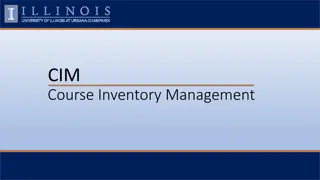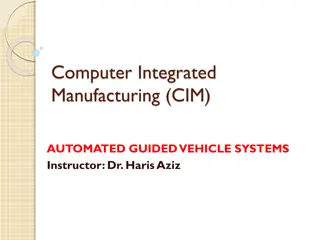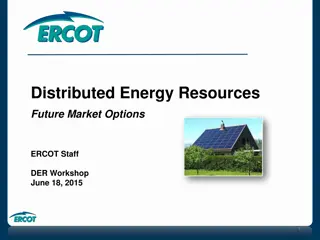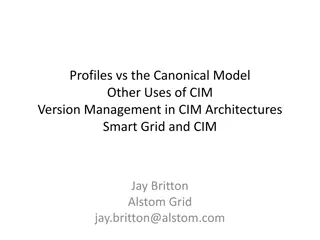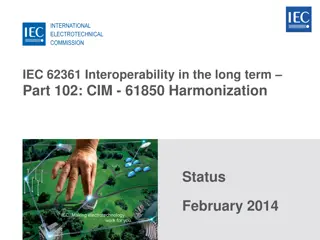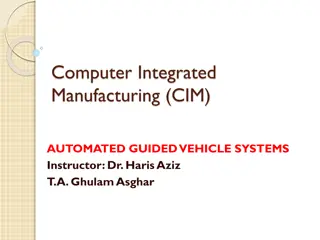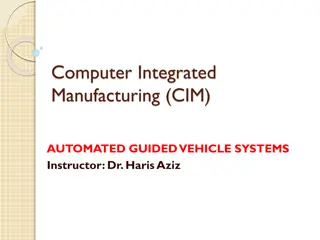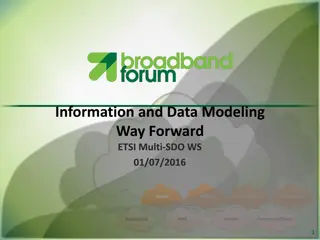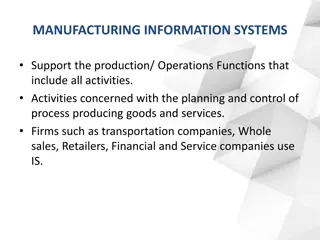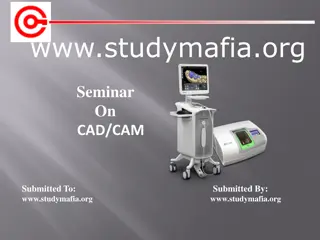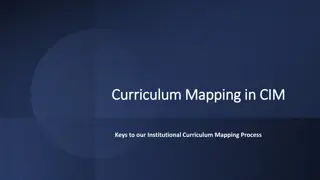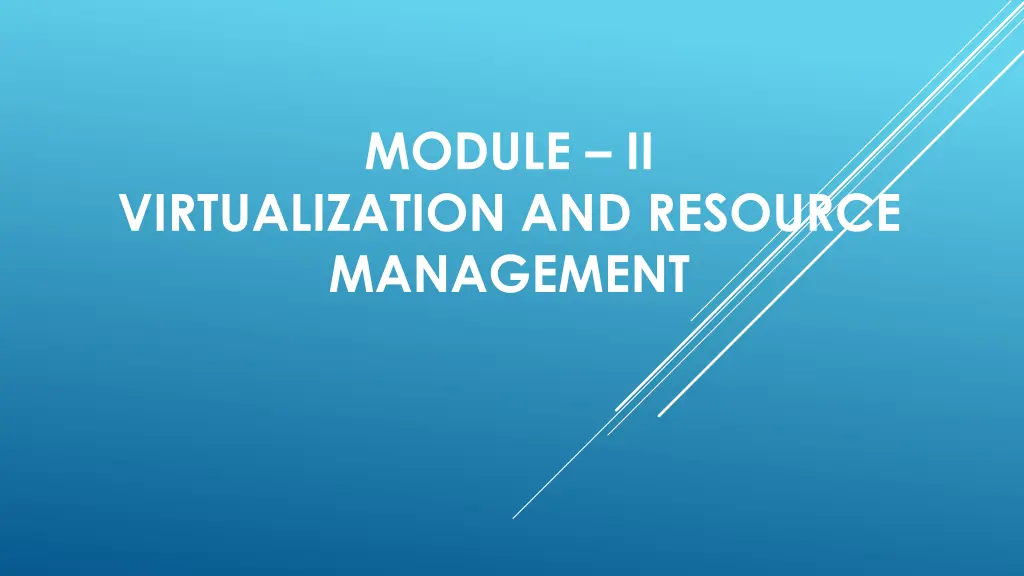
Understanding Virtualization and Resource Management
Explore the concept of virtualization in computing, which simulates interfaces to physical objects through multiplexing, aggregation, emulation, and more. Discover how virtualization abstracts underlying resources, increases system elasticity, and supports cloud computing. Learn about the benefits and challenges of virtualization, including performance penalties and hardware costs.
Download Presentation

Please find below an Image/Link to download the presentation.
The content on the website is provided AS IS for your information and personal use only. It may not be sold, licensed, or shared on other websites without obtaining consent from the author. If you encounter any issues during the download, it is possible that the publisher has removed the file from their server.
You are allowed to download the files provided on this website for personal or commercial use, subject to the condition that they are used lawfully. All files are the property of their respective owners.
The content on the website is provided AS IS for your information and personal use only. It may not be sold, licensed, or shared on other websites without obtaining consent from the author.
E N D
Presentation Transcript
MODULE II VIRTUALIZATION AND RESOURCE MANAGEMENT
VIRTUALIZATION Virtualization simulates the interface to a physical object by any one of four means: 1. Multiplexing. Create multiple virtual objects from one instance of a physical object. For example, a processor is multiplexed among a number of processes or threads. 2. Aggregation. Create one virtual object from multiple physical objects. For example, a number of physical disks are aggregated into a RAID disk. 3. Emulation. Construct a virtual object from a different type of physical object. For example, a physical disk emulates a random access memory. 4. Multiplexing and emulation. Examples: Virtual memory with paging multiplexes real Virtual address emulates a real address; TCP emulates a reliable multiplexes a physical communication channel and a memory and disk, and a bit processor. pipe and
VIRTUALIZATION Virtualization abstracts the underlying resources and simplifies their use, isolates users from one another, and supports replication, which, in turn, increases the elasticity of the system. Virtualization is a critical aspect of cloud computing, equally important to the providers and consumers of cloud services, and plays an important role in: System security because it allows isolation of services running on the same hardware. Performance and reliability because it allows applications to migrate from one platform to another. The development and management of services offered by a provider. Performance isolation. User convenience is a necessary condition for the success of the utility computing paradigms. One of the multiple facets of user convenience is the ability to run remotely using the system software and libraries required by the application. User convenience is a major advantage of a VM architecture over a traditional operating system.
VIRTUALIZATION There are side effects of virtualization, notably the performance penalty and the hardware costs. All privileged operations of a VM must be trapped and validated by the VMM, which ultimately controls system behavior; the increased overhead has a negative impact on performance. The cost of the hardware for a VM is higher than the cost for a system running a traditional operating system because the physical hardware is shared among a set of guest operating systems and it is typically configured with faster and/or multicore processors, more memory, larger disks, and additional network interfaces compared with a system running a traditional operating system
LAYERING AND VIRTUALIZATION A common approach to managing system complexity is to identify a set of layers with well-defined interfaces among them. The interfaces separate different levels of abstraction. Layering minimizes the interactions among the subsystems and simplifies the description of the subsystems. Each subsystem is abstracted through its interfaces with the other subsystems. Thus, we are able to design, implement, and modify the individual subsystems independently
LAYERING AND VIRTUALIZATION Figure shows the interfaces among the software components and the hardware. The hardware consists of one or more multicore processors, a system interconnect (e.g., one or more buses), a memory translation unit, the main memory, and I/O devices, including one or more networking interfaces. Applications written mostly in high-level languages (HLL) often call library modules and are compiled into object code. The first interface is the instruction set architecture (ISA) at the boundary of the hardware and the software. The next interface is the application binary interface (ABI), which allows the ensemble consisting of the application and the library modules to access the hardware. The ABI does not include privileged system instructions; instead it invokes system calls
LAYERING AND VIRTUALIZATION Finally, the application program interface (API) defines the set of instructions the hardware was designed to execute and gives the application access to the ISA. It includes HLL library calls, which often invoke system calls. The ABI is the projection of the computer system seen by the process, and the API is the projection of the system from the perspective of the HLL program. Clearly, the binaries created by a compiler for a specific ISA and a specific operating system are not portable. Such code cannot run on a computer with a different ISA or on computers with the same ISA but different operating systems However, it is possible to compile an HLL program for a VM environment, as shown in Figure High-level language (HLL) code can be translated for a specific architecture and operating system. HLL code can also be compiled into portable code and then the portable code translated for systems with different ISAs. The code that is shared/distributed is the object code in the first case and the portable code in the second case.
VIRTUAL MACHINE MONITORS A virtual machine monitor (VMM), also called a hypervisor, is the software that securely partitions the resources of a computer system into one or more virtual machines. A guest operating system is an operating system that runs under the control of a VMM rather than directly on the hardware. The VMM runs in kernel mode, whereas a guest OS runs in user mode. Sometimes the hardware supports a third mode of execution for the guest OS. VMMs allow several operating systems to run concurrently on a single hardware platform; at the same time, VMMs enforce isolation among these systems, thus enhancing security. A VMM controls how the guest operating system uses the hardware resources. The events occurring in one VM do not affect any other VM running under the same VMM. At the same time, the VMM enables: Multiple services to share the same platform. The movement of a server from one platform to another, the so-called live migration. System modification while maintaining backward compatibility with the original system.
VIRTUAL MACHINE MONITORS When a guest OS attempts to execute a privileged instruction, the VMM traps the operation and enforces the correctness and safety of the operation. The VMM guarantees the isolation of the individual VMs, and thus ensures security and encapsulation, a major concern in cloud computing. At the same time, the VMM monitors system performance and takes corrective action to avoid performance degradation. A VMM virtualizes the CPU and memory. For example, the VMM traps interrupts and dispatches them to the individual guest operating systems. If a guest OS disables interrupts, the VMM buffers such interrupts until the guest OS enables them. The VMM maintains a shadow page table for each guest OS and replicates any modification made by the guest OS in its own shadow page table. This shadow page table points to the actual page frame and is used by the hardware component called the memory management unit (MMU) for dynamic address translation
VIRTUAL MACHINES A virtual machine (VM) is an isolated environment that appears to be a whole computer but actually only has access to a portion of the computer resources. Each VM appears to be running on the bare hardware, giving the appearance of multiple instances of the same computer, though all are supported by a single physical system Two types of VM: process and system VMs [Figure]. A process VM is a virtual platform created for an individual process and destroyed once the process terminates. Virtually all operating systems provide a process VM for each one of the applications running, but the more interesting process VMs are those that support binaries compiled on a different instruction set. A system VM supports an operating system together with many user processes. When the VM runs under the control of a normal OS and provides a platform-independent host for a single application, we have an application virtual machine (e.g., Java Virtual Machine [JVM]).
VIRTUAL MACHINES A VMM allows several virtual machines to share a system. Several organizations of the software stack are possible: Traditional. VM also called a bare metal VMM. A thin software layer that runs directly on the host machine hardware; its main advantage is performance [see Figure (a)]. Examples: VMWare ESX, ESXi Servers, Xen, OS370, and Denali. Hybrid. The VMM shares the hardware with the existing OS [see Figure b]. Example: VMWare Workstation. Hosted. The VM runs on top of an existing OS [see Figure(c)]. The main advantage of this approach is that the VM is easier to build and install. Another advantage of this solution is that the VMM could use several components of the host OS, such as the scheduler, the pager, and the I/O drivers, rather than providing its own. Example: User-mode Linux.
PERFORMANCE AND SECURITY ISOLATION Performance isolation is a critical condition for quality-of-service (QoS) guarantees in shared computing environments Traditional operating systems multiplex multiple processes or threads, whereas a virtualization supported by a VMM multiplexes full operating systems. Obviously, there is a performance penalty because an OS is considerably more heavyweight than a process and the overhead of context switching is larger. Traditional operating systems multiplex multiple processes or threads, whereas a virtualization supported by a VMM multiplexes full operating systems. Obviously, there is a performance penalty because an OS is considerably more heavyweight than a process and the overhead of context switching is larger. A VMM executes directly on the hardware a subset of frequently used machine instructions generated by the application and emulates privileged instructions, including device I/O requests. The subset of the instructions executed directly by the hardware includes arithmetic instructions, memory access, and branching instructions.
PERFORMANCE AND SECURITY ISOLATION Operating systems use process abstraction not only for resource sharing but also to support isolation. Unfortunately, this is not sufficient from a security perspective. Once a process is compromised, it is rather easy for an attacker to penetrate the entire system. On the other hand, the software running on a virtual machine has the constraints of its own dedicated hardware; it can only access virtual devices emulated by the software. This layer of software has the potential to provide a level of isolation nearly equivalent to the isolation presented by two different physical systems. Thus, the virtualization can be used to improve security in a cloud computing environment.
FULL VIRTUALIZATION AND PARA VIRTUALIZATION There are two basic approaches to processor virtualization: full virtualization, in which each virtual machine runs on an exact copy of the actual hardware, Example : VMware VMMs paravirtualization, in which each virtual machine runs on a slightly modified copy of the actual hardware. Example: Xen and Denali The reasons that paravirtualization is often adopted are (i) some aspects of the hardware cannot be virtualized; (ii) to improve performance; and (iii) to present a simpler interface.
FULL VIRTUALIZATION AND PARAVIRTUALIZATION Full virtualization requires a virtualizable architecture; the hardware is fully exposed to the guest OS, which runs unchanged, and this ensures that this direct execution mode is efficient. On the other hand, paravirtualization is done because some architectures such as x86 are not easily virtualizable. Paravirtualization demands that the guest OS be modified to run under the VMM; furthermore, the guest OS code must be ported for individual hardware platforms. Application performance under a virtual machine is critical; generally, virtualization adds some level of overhead that negatively affects the performance. In some cases an application running under a VM performs better than one running under a classical OS. This is the case of a policy called cache isolation. The cache is generally not partitioned equally among processes running under a classical OS, since one process may use the cache space better than the other. Example, in the case of two processes, one write-intensive and the other read-intensive, the cache may be aggressively filled by the first. Under the cache isolation policy the cache is divided between the VMs and it is beneficial to run workloads competing for cache in two different VMs
HARDWARE SUPPORT FOR VIRTUALIZATION In early 2000 it became obvious that hardware support for virtualization was necessary, and Intel and AMD started work on the first-generation virtualization extensions of the x86 architecture. In 2005 Intel released two Pentium 4 models supporting VT-x, and in 2006 AMD announced Pacifica and then several Athlon 64 models Problems faced by virtualization of the x86 architecture: Ring deprivileging. This means that a VMM forces the guest software, the operating system, and the applications to run at a privilege level greater than 0. x86 architecture provides four protection rings at levels 0 3. Two solutions are then possible: (a) The (0/1/3) mode, in which the VMM, the OS, and the application run at privilege levels 0, 1, and 3, respectively; or (b) the (0,3,3) mode, in which the VMM, a guest OS, and applications run at privilege levels 0, 3, and 3, respectively. Ring aliasing. Problems created when a guest OS is forced to run at a privilege level other than that it was originally designed for.
HARDWARE SUPPORT FOR VIRTUALIZATION Problems faced by virtualization of the x86 architecture:[cont ] Address space compression. A VMM uses parts of the guest address space to store several system data structures, such as the interrupt-descriptor table and the global- descriptor table. Such data structures must be protected, but the guest software must have access to them Guest system calls. Two instructions, SYSENTER and SYSEXIT, support low-latency system calls. Interrupt virtualization. In response to a physical interrupt, the VMM generates a virtual interrupt and delivers it later to the target guest OS. But every OS has the ability to mask interrupts5; thus the virtual interrupt could only be delivered to the guest OS when the interrupt is not masked. Keeping track of all guest OS attempts to mask interrupts greatly complicates the VMM and increases the overhead. Access to hidden state. Elements of the system state (e.g., descriptor caches for segment registers) are hidden; there is no mechanism for saving and restoring the hidden components when there is a context switch from one VM to another Frequent access to privileged resources increases VMM overhead. The task-priority register (TPR) is frequently used by a guest OS. The VMM must protect the access to this register and trap all attempts to access it. This can cause a significant performance degradation.
HARDWARE SUPPORT FOR VIRTUALIZATION A major architectural enhancement provided by the VT-x is the support for two modes of operations and a new data structure called the virtual machine control structure (VMCS), including host-state and guest-state areas VMX root. Intended for VMM operations and very close to the x86 without VT-x VMX nonroot. Intended to support a VM When executing a VM entry operation, the processor state is loaded from the guest-state of the VM scheduled to run; then the control is transferred from the VMM to the VM. A VM exit saves the processor state in the guest-state area of the running VM; then it loads the processor state from the host-state area and finally transfers control to the VMM. Note that all VM exit operations use a common entry point to the VMM.
HARDWARE SUPPORT FOR VIRTUALIZATION Each VM exit operation saves the reason for the exit The VMCS area is referenced with a physical address and its layout is not fixed by the architecture but can be optimized by a particular implementation. The VMCS includes control bits that facilitate the implementation of virtual interrupts Processors based on two new virtualization architectures, VT-d 6 and VT-c, have been developed. The first supports the I/O memory management unit (I/O MMU) virtualization and the second supports network virtualization. Also known as PCI pass-through, I/O MMU virtualization gives VMs direct access to peripheral devices. VT-d supports: DMA address remapping, which is address translation for device DMA transfers. Interrupt remapping, which is isolation of device interrupts and VM routing. I/O device assignment, in which an administrator can assign the devices to a VM in any configuration. Reliability features, which report and record DMA and interrupt errors that may otherwise corrupt memory and impact VM isolation

